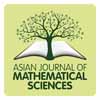Forecast the Prediction or Predict the Forecast — A Precise View of Investigating Butterfly Effects
Main Article Content
Abstract
Influenza infection is a large global issue. In Hong Kong, the common stages of an influenza outbreak are a decrease in temperature (during winter), which leads to the avian flux, then to the animal flux, and gradually infects humans — leading to an outbreak. However, in Australia, the story is quite different. Excessive carbon dioxide emissions cause extreme weather changes and climatic factors such as strong wind, temperature change, and wet weather. The result is an outbreak of human influenza. These factors constitute a series of correlated sequences. The outcome gives rise to a Bayesian decision tree, which predicts the probability of taking vaccine given that the person is infected. This predictive vaccine efficacy is based on Bayes’ probability, rather than the traditional definition of efficacy or effectiveness. This is the definition of “forecasting a prediction.â€. Conversely, if Bayes’ probability tree is understood, and the same categorized results are grouped by a random variable, the consequences of the domino effect will be formed. More specifically, this “predicts the forecasting.†One of the aforementioned butterfly effect’s applications (besides an influenza outbreak) is the prediction of an earthquake. It can forecast an earthquake together with its corresponding feasible predicting probability and issue necessary warnings in advance, according to daily phenomena. This act has the potential to save millions of lives.
Article Details
This is an Open Access article distributed under the terms of the Attribution-Noncommercial 4.0 International License [CC BY-NC 4.0], which requires that reusers give credit to the creator. It allows reusers to distribute, remix, adapt, and build upon the material in any medium or format, for noncommercial purposes only.
